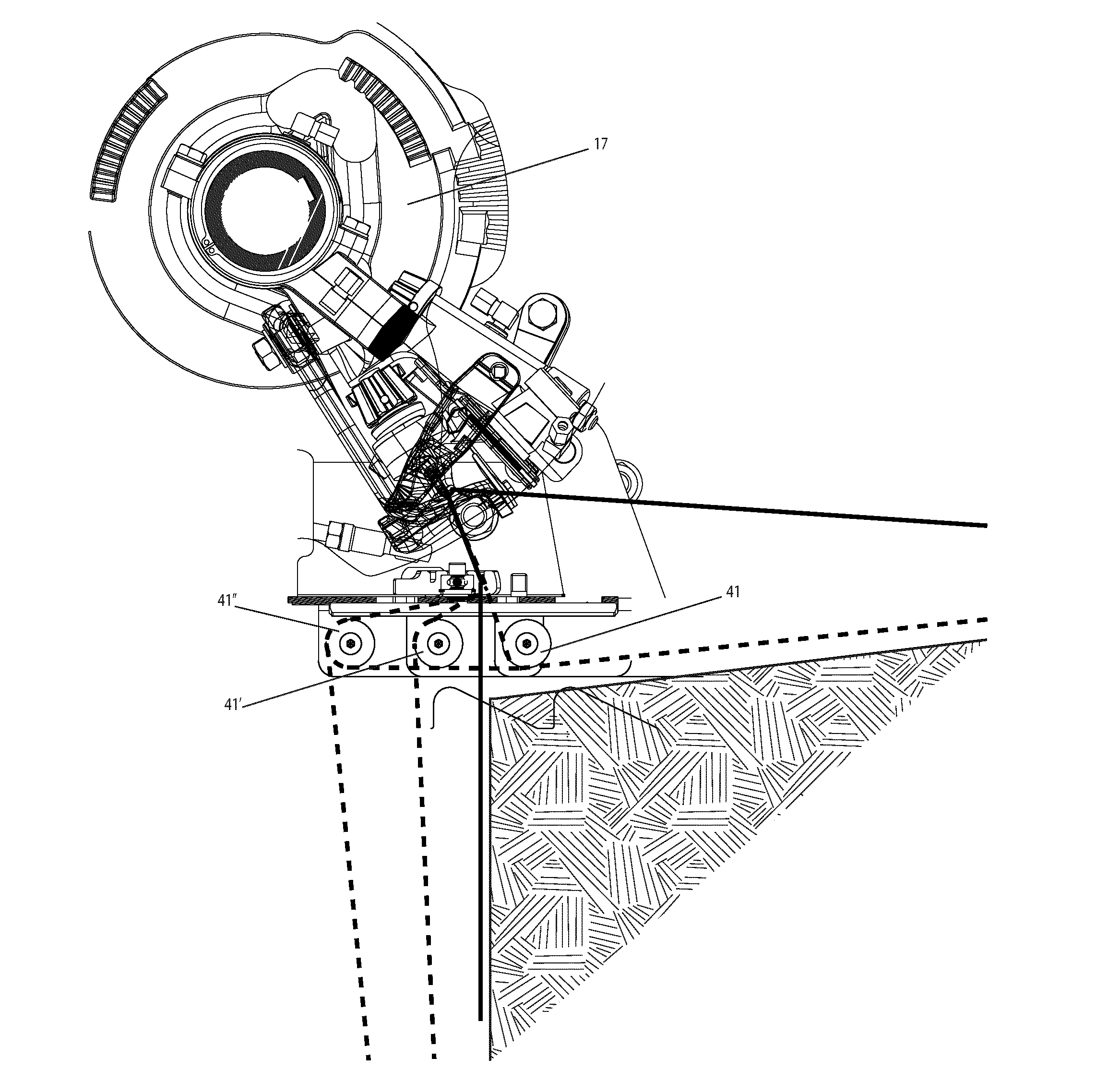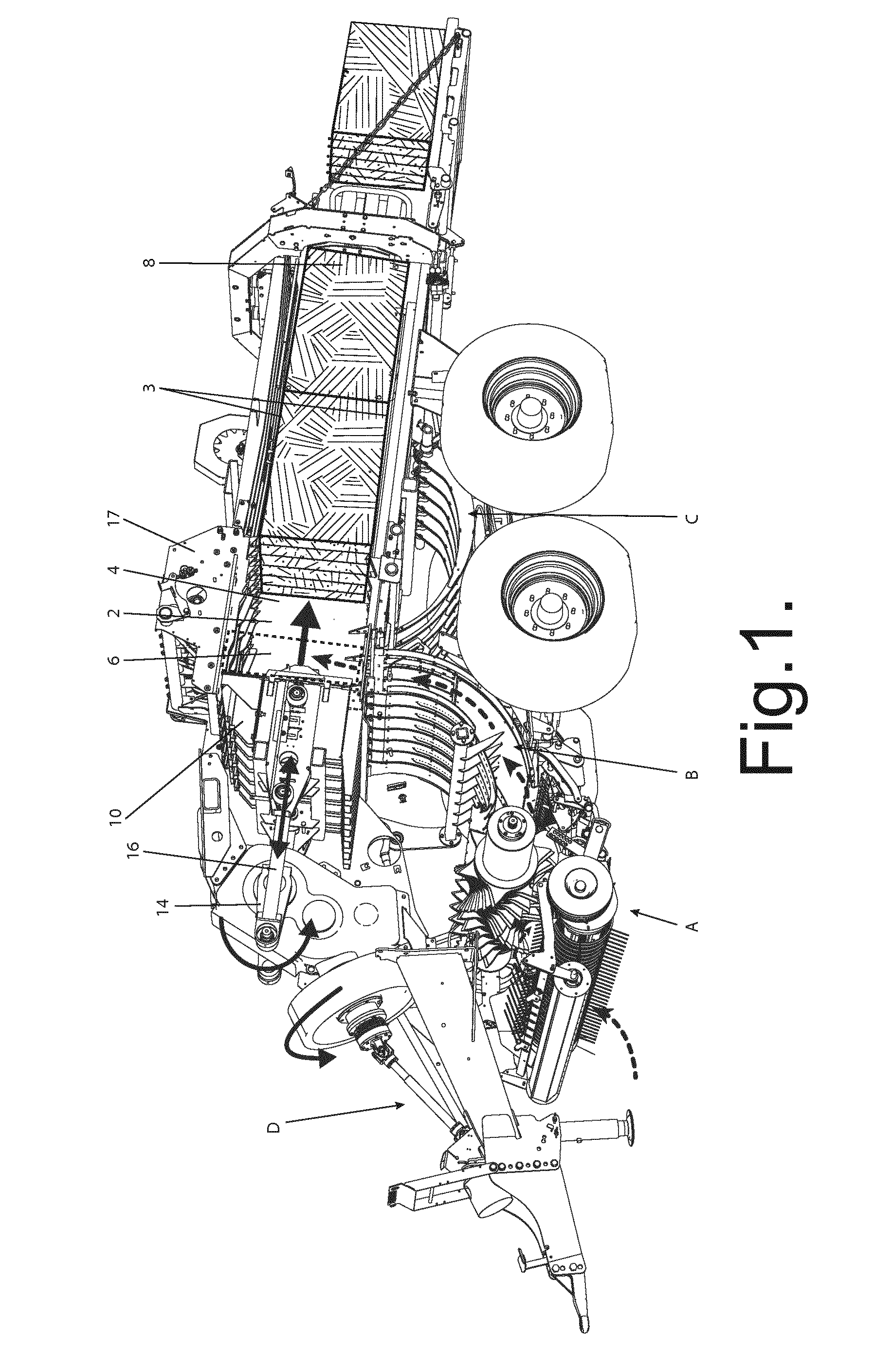Baler and method of baling
a baler and baling technology, applied in the field of baler and baling method, can solve the problems of increasing un uniform expansion amount, and upper limit of compression pressure that can be applied to the baler, so as to reduce the risk of twine breaking
- Summary
- Abstract
- Description
- Claims
- Application Information
AI Technical Summary
Benefits of technology
Problems solved by technology
Method used
Image
Examples
Embodiment Construction
[0039]The baling machine or baler shown in FIG. 1 includes a baling chamber 2 that is defined by top and bottom plates 3 and two side walls 4, one of which has been omitted from the drawing to show the interior of the chamber 2. The baling chamber 2 comprises a channel having an inlet end6 and an outlet end 8. At the inlet end 6, the channel is closed by a plunger 10 that can be driven into the baling chamber 2 in a reciprocating manner. In this example, the plunger 10 is driven from a rotating drive axle 12 via a pair of drive arms 14, 16. The baling machine also includes a binding device 17, for example as described in U.S. Pat. No. 4,074,623, for binding the bale with binding twine.
[0040]In addition, the baling machine includes a pick up mechanism A for picking up cut bale material (for example grass and straw) from the ground, a feed mechanism B for feeding the bale material into the baling chamber 2, a set of needles C for feeding binding twine through the baling chamber and a ...
PUM
 Login to View More
Login to View More Abstract
Description
Claims
Application Information
 Login to View More
Login to View More - R&D
- Intellectual Property
- Life Sciences
- Materials
- Tech Scout
- Unparalleled Data Quality
- Higher Quality Content
- 60% Fewer Hallucinations
Browse by: Latest US Patents, China's latest patents, Technical Efficacy Thesaurus, Application Domain, Technology Topic, Popular Technical Reports.
© 2025 PatSnap. All rights reserved.Legal|Privacy policy|Modern Slavery Act Transparency Statement|Sitemap|About US| Contact US: help@patsnap.com



